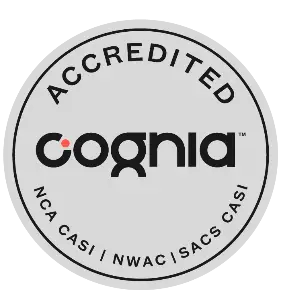School Safety Report
Introduction - Real Talk on School Safety
School safety has always been a topic of discussion — and action — in the Canyons School District. Some measures are obvious, such as security cameras, emergency preparedness drills that schools practice throughout the year and vestibules that require visitors to check-in at the Main Office before entering schools. But much of what we do is invisible. From the Internet filters we use to safeguard students from accessing inappropriate online content to the consistent rules and expectations we enforce to keep our classrooms free from bullying, harassment and discrimination, Canyons District is building safe schools from the inside out. We invite families to become familiar with our safety protocols and join us on this mission to Think Safe toward maintaining schools that are welcoming, secure, and prepared.
Our Newest Safety Measures
We regularly review and update our safety measures, and are encouraged by data that show schools are the safest places for children. Following are explainer videos detailing Canyons District’s emergency response protocols.
Evacuation Protocols
Hold Protocols
Run, Hide, Fight Protocols
Secure Protocols
Lockdown Protocols
Safe Entry & Emergency Drills
Learn about entrance procedures and practice drills for evacuations, lockdowns, shelter-in-place and more.
Emergency Communication
We communicate in an emergency and immediately alert parents by email and phone. Safe reunification is a top priority.
Volunteers & Community Partnerships
How do communities support schools in their safety procedures and emergencies?
School Safety Tips
Tips and conversation-starters for families to discuss with students.
Transportation Safety
Whether your student takes the bus, walks to school, or gets dropped off, these tips and guidelines will help keep everyone safe.
School Climate, Social-Emotional Supports
We provide programs and initiatives to make sure students feel secure and supported.
Internet Safety & Digital Citizenship
What is Canyons District doing to maintain healthy, safe learning environments at schools?
School Community Council Input
What steps should School Community Councils take as they review the School Safety Report?
Safe Entry & Emergency Drills
Safe Entry
In matters of safety, making sure the most accessible and visible areas of a school are protected is key. To that end, the Canyons Board of Education fast-tracked the timeline to install vestibules in all elementary and middle schools to provide additional security at the schools’ front entrances. The vestibules include an additional set of security doors at front entrances, which funnel visitors to the main office before they can access the rest of the school, and provide a layer of security and opportunity to welcome, orient and provide good customer service to our patrons. Every adult in a school building will have visible some form of identification. Employees must wear their employee ID cards. Parents and guardians are required to show a picture ID to check students out of class. Visitors who come to the school to volunteer in class also need to show a picture ID and log in on the computer in the main office to receive a visitor badge.
Emergency Drills
Canyons District’s schools treat every emergency drill as a teachable moment and opportunity to commit response protocols to memory. Emergency drills establish greater predictability and help all stakeholders — students, emergency responders, teachers and parents — work together in lockstep, because they know what to expect and what’s expected of them. All Canyons District schools practice lockdown and shelter-in-place drills throughout the year, in addition to preparing for a host of other threats, from fires and earthquakes to hazardous materials. Elementary students participate in these exercises at least once a month. Secondary schools hold quarterly drills.
Elementary Schools
Drill Calendar
- August-September - Fire and Lockdown with "Run, Hide, Fight" video for employees
- October - Secure
- November - Bomb Threat
- December - Hold
- January - Fire
- February - Hazardous Materials
- March - Carbon Monoxide
- April - Earthquake
- May - Drill of your Choice
Middle and High Schools
Drill Calendar
- August-September - Fire and Lockdown with "Run, Hide, Fight" video for employees
- November - Secure
- January - Fire
- April - Earthquake
IN AN EMERGENCY
TAKE ACTION
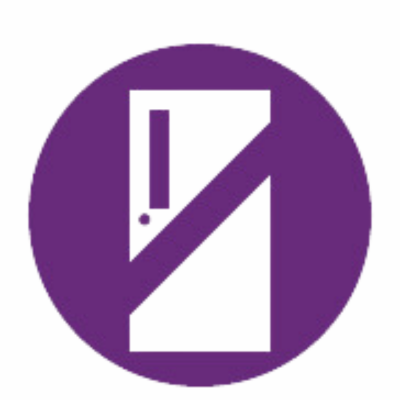
HOLD! In your room or area. Clear the halls.
STUDENTS
- Clear the hallways and remain in room or area until the “All Clear” is announced
- Do business as usual
ADULTS
- Close and lock the door
- Account for students and adults
- Do business as usual

SECURE! Get inside. Lock outside doors.
STUDENTS
- Return to inside of building
- Do business as usual
ADULTS
- Bring everyone indoors
- Lock outside doors
- Increase situational awareness
- Account for students and adults
- Do business as usual
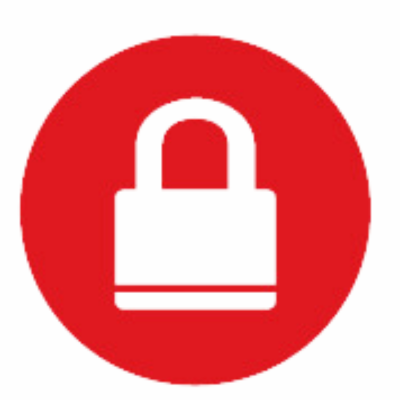
LOCKDOWN! Locks, lights, out of sight.
STUDENTS
- Move away from sight
- Maintain silence
- Do not open the door
ADULTS
- Recover students from hallway if possible
- Lock the classroom door
- Turn out the lights
- Move away from sight
- Maintain silence
- Do not open the door
- Prepare to evade or defend

EVACUATE! (A location may be specified)
STUDENTS
- Leave stuff behind if required to
- If possible, bring your phone
- Follow instructions
ADULTS
- Lead students to Evacuation location
- Account for students and adults
- Notify if missing, extra or injured students
or adults
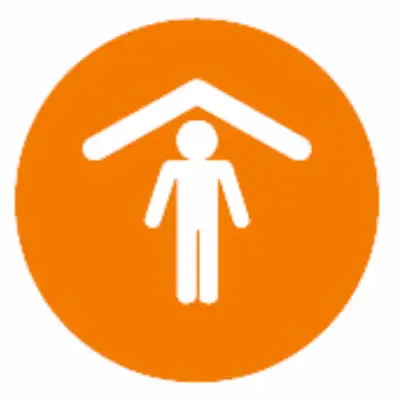
SHELTER! Hazard and safety strategy.
STUDENTS
Use appropriate safety strategy for the hazard
ADULTS
- Lead safety strategy
- Account for students and adults
- Notify if missing, extra or injured students
or adults
Hazard
Safety Strategy
Tornado
Evacuate to shelter area
Hazmat
Seal the room
Earthquake
Drop, cover and hold
Tsunami
Get to high ground
Standard Response Protocol distributed by The “I Love U Guys” Foundation. Conifer, CO.
Communicating in an Emergency
Parent Notifications
When parents hear about an emergency at or near their child’s school, they want information as quickly as possible. In Canyons District, we’ve established communication protocols so that parents and guardians can receive emergency notifications in a matter of minutes. When an incident occurs, parents are immediately notified via telephone, email or text message — or any combination of the three. These notifications go to the phone numbers and email addresses that parents supply during CSD’s annual online registration process. Have you recently moved, or changed phone numbers? Do you prefer to receive text messages, instead of an email or phone call? Parents can update their contact information and notification preferences at skyward.canyonsdistrict.org.
Safety and Crisis Tipline
One of the most powerful ways to prevent violence is to leverage the eyes and ears of the community to report it in advance — and our schools have a high-tech tool at their disposal to facilitate that. Canyons was the first school district in Utah to adopt the SafeUT mobile app and tipline, which allows anyone to anonymously report acts of bullying and threatened violence, or to seek help for emotional crises, suicidal threats and addiction problems. The service is monitored 24 hours a day and seven days a week by school administrators and counselors at the University of Utah’s Neuropsychiatric Institute.
School Reunification Plans
An essential component of school emergency response plans is the reunification of students with their families and caregivers. The goal of any reunification process is to minimize anxiety and trauma for students while keeping them comfortable and safe. Each school within Canyons District has created a site-based plan describing the school’s evacuation routes, assembly points, and reunification plans. These plans establish a parent/guardian check-in location and have a system ready for checking out students. School reunification plans take into account designated Areas of Rescue Assistance for evacuating individuals who cannot exit the school building without assistance. School administrators train employees and students on the school’s evacuation plan through regular scenario-based drills throughout the year. Reunification points, and backup sites, are generally within walking distance of a school, though in some circumstances, schools will need to evacuate students further away from the campus. Often, reunification sites are nearby schools or local gathering places, such as churches or recreation centers. During a reunification, the District will enact emergency communications protocols to provide parents and guardians with directions to the reunification site and instructions for retrieving their student(s). In some cases, transportation is provided by the District’s fleet of buses. To minimize chaos and ensure the safety of students, District personnel will often be asked to help check-out students to authorized caregivers through an orderly process. It’s not uncommon to also have counseling teams on hand to provide assistance to anyone struggling with strong emotions.
Hoax Threats are No Joke
Bomb threats are rare, affecting fewer than 1 percent of the nation’s public schools on any given year, and 90 percent are hoaxes. But hoax threats are no joke. Since 2014, there has been a 33 percent increase in these types of threats against schools, according to the U.S. Department of Justice, disrupting schools and wasting precious law enforcement resources
— and that’s just bomb threats. In the age of social media, schools are witnessing an increase in all types of hoax threats. Every threat is taken seriously and thoroughly investigated by school administrators and law enforcement to determine its credibility. If found to be a hoax, those responsible can face serious criminal penalties. According to state legislation enacted in 2020, individuals who disrupt the regular schedule of a school by creating a hoax threat can be held financially responsible to pay for any costs or fees incurred by federal, state, local, private or individual entities in responding to the threat. Minors may be referred to juvenile court for perpetrating hoax threats. Canyons District encourages parents to talk to their children about the risk of posting and sharing hoax threats on social media, and urges anyone who sees something unsafe to report it through official channels: to their school or through the anonymous crisis and safety tipline SafeUT.
Volunteers and Community Partnerships
Working Together to Build Safe Neighborhoods
Volunteer Approval Process
Canyons District has established procedures in line with state law, which requires background screenings for prospective school volunteers. All volunteers in schools, including members of the PTA and School Community Council, need to complete and submit a new Volunteer Application annually. There are two types of volunteers: supervised and unsupervised. Supervised volunteers are always within sight of other adults and never alone with a child. Unsupervised volunteers, which may include overnight travel chaperones, costume-fitters, or coaching assistants, must undergo a more thorough FBI criminal screening, which is managed by the school principal in coordination with CSD’s Human Resources Department. These FBI screenings are good indefinitely. All schools use a computer system to check-in volunteers and confirm that they have been cleared to work with students.
Community Partnerships

The safety and welfare of children is a communitywide priority in Canyons District where schools work hand-in-hand with cities, first responders, non-profit groups and citizens to safeguard neighborhoods and prepare for emergencies. From the contributions of our parent volunteers and PTA to the policing efforts of our School Resource Officers and the crossing guards hired by municipal partners to help students safely get to and from school—it takes all of us to put kids first.
School Resource Officers are sworn law enforcement personnel whose salaries are co-funded by the District. They serve and protect our schools while also mitigating criminal behavior by building trusting relationships with students so they can feel comfortable reporting suspicious activity. They also sponsor anti-drug and –violence activities, such as the Drug Abuse Resistance Education (DARE) program and NOVA. CSD partners with four law enforcement agencies who serve our district students and families; Draper Police Department, Sandy Police Department, Unified Police Department-Midvale and Cottonwood Heights.
Canyons District is a member of the S.A.F.E. Neighborhoods Program. In partnership with the American Red Cross, local governments, and school districts, SAFE – an acronym for Schools Aid Families in Emergencies —trains community volunteers to mobilize as a neighborhood and operate their own Incident Command centers until outside help arrives. The idea behind it is to build the capacity of neighbors to help neighbors in the 96 hours immediately following a catastrophic event – the amount of time that it can take for first responders to reach those in need. In the event of a major emergency, elementary schools become hubs for communities to gather and organize. All of our elementary schools store a large black tote containing maps and radio frequencies — everything that CERT teams, ham radio operators and other do-gooders need to set up a communications hub, begin search-and-rescue operations and reunify families.
Canyons District utilizes the Choose Gang Free Program by way of four advocates serving our students. Currently, Jordan High, Hillcrest High, Midvale Middle, Union Middle and Mount Jordan Middle benefit from a trained adult who works to direct students away from gang activity and encourage appropriate alternatives and mentorship. These advocates are available to all students as needed. Choose Gang Free is funded through a grant from the USBE.
The Canyons District Peer Court Program is a district-based intervention/prevention program to encourage young people to 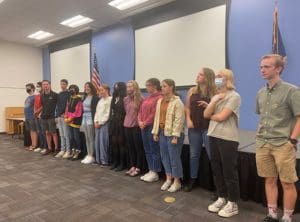 take responsibility for their actions and make better choices in the future. Peer Court allows for restoration, education and mentorship for each student and family involved. The court is staffed by high school students from across the district. Administrators may refer students to peer court as an alternative to suspension, involvement from law enforcement, and entrance into the juvenile justice system.
take responsibility for their actions and make better choices in the future. Peer Court allows for restoration, education and mentorship for each student and family involved. The court is staffed by high school students from across the district. Administrators may refer students to peer court as an alternative to suspension, involvement from law enforcement, and entrance into the juvenile justice system.
School Safety Tips
- Safety Tip 1: Report Unsafe or Suspicious Conduct
 If you see or hear something that makes you feel unsafe, say something using the confidential safety tipline, SafeUT.
If you see or hear something that makes you feel unsafe, say something using the confidential safety tipline, SafeUT.
One of the most powerful ways to combat violence is to leverage the eyes and ears of everyone in the community to report it in advance—and our schools have a high-tech tool at their disposal to facilitate that. Canyons District was the first in Utah to adopt the SafeUT mobile app and tipline, which allows anyone to anonymously report acts of bullying and threatened violence, or to seek help for emotional crises, suicidal threats and addiction problems. The service is monitored 24 hours a day and seven days a week by school administrators and counselors at the University of Utah’s Neuropsychiatric Institute and can be downloaded here.
- Safety Tip 2: Update Emergency Contact Information
Check your communications settings in CSD’s Skyward system to ensure that we have your most up-to-date contact information.
We get it. When parents hear about an emergency near or at their child’s school, they want information as soon as possible. It’s a natural and expected reaction. In Canyons District, we’ve established communication protocols so that parents and guardians can receive emergency notification in a matter of minutes. When an incident occurs, parents are immediately notified via telephone, text, and email. These notifications go to the phone numbers and email addresses that parents supply during CSD’s annual online registration process. Parents can update their contact information at skyward.canyonsdistrict.org.
- Safety Tip 3: Know Your Role in an Emergency
Everyone has a role to play in an emergency; familiarize yourself with Canyons District’s safety measures and emergency drills.
All Canyons schools practice emergency drills throughout the year. Follow this link for brief explanations of what teachers and students are trained to do during these exercises.
Please tell your child that the most important thing to do in an emergency is to follow the directions of their teachers and school staff. It’s important to reassure them and let them know that you have confidence in the training that school staff have received.
When notified of a school emergency, we ask that parents please don’t come to the campus until notified that it is safe. Rushing to your child’s school during an emergency can put you in harm’s way and impede law enforcement.
- Understand the Risks of Making or Sharing Hoax Threats
Did you know that 90 percent of all bomb threats are hoaxes?
Our schools take each threat seriously and conduct a thorough investigation to determine its credibility. But hoax threats are no joke. They are serious federal crimes that disrupt schools and waste precious law enforcement resources. So, please, #ThinkBeforeYouPost.
- Don’t ever post or share a hoax threat online.
- If you see a threat of violence on social media, report it using the SafeUT app (https://safeut.med.utah.edu/)
- Talk to your children about responsible social media use.
- Safety Tip 5: Lookout for Buses and Pedestrians
Be on the lookout for young children walking to schools and bus stops, be mindful that buses make frequent stops.
The start of school is the perfect time for parents to review family emergency plans and talk to their children about the rules of the road—or tips for staying safe while on their way to and from school each day. Here are a few helpful safety routines to always keep in mind. The CDC’s Safe Youth, Safe Schools website contains information about safety issues in getting to and from school, and data on sports and playground injuries, youth violence, bullying, and more. Or, visit our Safety Tips for Parents guide.
- Safety Tip 6: Bring Your Photo ID to Visit or Checkout
The front office staff at Canyons District’s schools are trained to request photo identification.
All visitors must present photo identification prior to checking out their children. Only individuals who are listed as parents, guardians, or emergency contacts in Skyward will be able to check students out of school.
- Safety Tip 7: Register as a Volunteer
In order to allow sufficient time for the volunteer screening process, volunteers should register with the district several days in advance.
Canyons School District has established procedures that adhere to Utah State law requiring school districts to screen prospective volunteers. All supervised volunteers in schools need to complete and submit a new Volunteer Application annually.
- Safety Tip 8: Review Your Family Safety Plan
Take time to discuss your family’s safety plan in the event of a catastrophic event, such as an earthquake.
Canyons District is a member of the S.A.F.E. Neighborhoods Program. In partnership with the American Red Cross, local governments, and school districts, SAFE – an acronym for Schools Aid Families in Emergencies — trains community volunteers to mobilize as a neighborhood and operate their own Incident Command centers until outside help arrives.
The idea behind it is to build the capacity of neighbors to help neighbors in the 96 hours immediately following a catastrophic event – the amount of time that it can take for first responders to reach those in need. In the event of a major emergency, elementary schools become hubs for communities to gather and organize. All of our elementary schools store a large black tote containing maps and radio frequencies — everything that CERT teams, ham radio operators and other do-gooders need to set up a communications hub, begin search-and-rescue operations and reunify families.
Transportation Safety Tips
 Some 15,000 Canyons District students begin and end their day with a trip on a bus. As a form of mass transit, buses keep thousands of cars off the road, reducing emissions and helping to improve the quality of the air we breathe. Buses are also the safest form of travel, according to the National Highway Traffic Safety Administration.
Some 15,000 Canyons District students begin and end their day with a trip on a bus. As a form of mass transit, buses keep thousands of cars off the road, reducing emissions and helping to improve the quality of the air we breathe. Buses are also the safest form of travel, according to the National Highway Traffic Safety Administration.
CSD’s school buses are driven by professionals with Commercial Driver’s Licenses and are held to a higher safety standard than regular vehicles. In one school year, our buses can be inspected up to 400 times. CSD mechanics maintain about 180 buses, and for their efforts in 2017, were awarded the Utah Highway Patrol’s Safety Gold Medal. The status is a rare distinction — and a sign that CSD students are traveling on the safest buses possible.
Technology also plays a role in bus safety. Every bus has cameras capable of monitoring what takes place on the bus. The buses are also equipped with a Zonar GPS Tracking system, which relays information about their location, speed, engine health and exactly what time it arrived and left each bus stop — in real time. With the start of each school year, Canyons District asks patrons to be on the lookout for young children walking to schools and bus stops, and to be mindful that buses make frequent stops. The District also asks students to adhere to the District’s Bus Code of Conduct.
Safe Walking Routes
When students head out the door, we want them to be safe, whether they are walking, riding their bikes, or skipping down the sidewalk. State law mandates that schools designate Safe Walking Routes for students who walk or ride their bikes to school. School Community Councils define the routes for students in their school, and work with the District to provide a map of the route, which may include suggested improvements like crosswalks, crossing guards, sidewalks, and more. Schools post their Safe Walking Routes on their websites.
Cities — or in some places, the county — determine whether an area should receive safety improvements to assist students as they cross the street. Generally speaking, cities approve crossing guards in areas where 10 or more children cross the street. Students who walk or ride their bike to school should familiarize themselves with the school’s Safe Walking Route as recommended by administrators in partnership with each School Community Council. Together, we can keep our roadways safe.
View Safe Walking Routes Here
Parking Lot Safety
One of the busiest places to be at school, whether just before the first bell rings or just after class is dismissed, is the parking lot. A keen eye, cautious approach, and the ability to follow instructions goes a long way in moderating the flow of traffic in and out of Canyons’ school parking lots, but Canyons has made improvements on school pick-up and drop-off zones, curbing, and other measures that improve the direction of traffic. Schools also develop plans to address traffic needs at their individual sites.
Traveling to School Safety Tips
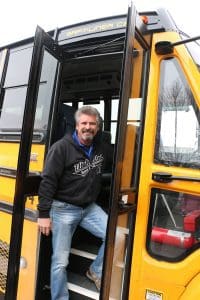 With the start of each school year, Canyons District asks patrons to be on the lookout for young children walking to schools and bus stops, and to be mindful that buses make frequent stops. The District also asks students to adhere to the District’s Bus Code of Conduct. Together, we can keep our roadways safe.
With the start of each school year, Canyons District asks patrons to be on the lookout for young children walking to schools and bus stops, and to be mindful that buses make frequent stops. The District also asks students to adhere to the District’s Bus Code of Conduct. Together, we can keep our roadways safe.
- Pedestrians should stick to sidewalks when possible and walk facing traffic. Before crossing the street or train tracks, even at a crosswalk or designated area, stop and look left and right.
- When biking or skateboarding to school, children should wear a helmet and understand traffic rules. They should come to a complete stop at crosswalks and walk their bike or skateboard across. Bikes and skate boards are not safe for use on train station platforms.
- Never dart out in front of a parked car.
- Avoid distractions. Do not bike, drive a motor vehicle, or cross a busy area while texting, talking on the phone or using headphones.
- Obey all traffic signals and signs, and never go around a lowered gate at train crossings.
- Drivers must always yield to pedestrians and should take extra care in school zones and at crosswalks.
- It is illegal to pass a bus that is loading or unloading children.
School Climate, Social-Emotional Supports
Resources for Families
Every child deserves to feel welcome and secure at school. That’s why Canyons is focusing not just on outfitting facilities with modern security features but also on fortifying the emotional needs of children. Through the District’s Student Services Department, all CSD schools have been assigned a school psychologist and/or a counselor and social worker — all highly trained professionals who can help guide students through challenging emotions. Building a positive climate, where all children feel like they are vital and valued members of the school community, is a top priority of principals and teachers.
CSD embraces a philosophy of teaching appropriate and positive behaviors instead of punishing misbehaviors, has formed task forces to address such important topics as suicide, holds fun-filled orientation meetings for students as they move from elementary to middle school and from middle to high school, and sponsors a robust roster of extracurricular activities. In CSD, our aim is to maintain environments where children feel safe to develop interests, raise their hands, reach out to new friends, and know they are surrounded by caring adults.
For families who are seeking additional social and emotional support, please contact your school counselor.
- Crisis Services
- Canyons District Services
- Community-Based Counseling Services
- LGBTQ+ Resources
- Parent Education Services
- Suicide Prevention
Counseling Supports
The concept is really quite simple: If students are feeling insecure, depressed or fearful, or any other emotion that is at the root of concerning behaviors, chances are they aren’t learning at high levels. To the end of helping all students feel a sense of balance and achieve at school, Canyons District has increased the number of psychologists, social workers, counselors and nurses working in schools. They serve as a resource for families in the areas of suicide prevention, gang prevention, bullying prevention and drug and alcohol prevention. They also use Positive Behavioral Interventions and Supports to teach relationship skills, self awareness, self-management, social awareness and responsible decision making. These counseling experts also provide schools with crisis support assistance in the event of emergencies. Canyons District also contracts with local mental health agencies and professionals as an added resource for families.
Vaping and Substance Abuse
Canyons takes substance abuse seriously. Whether students are drinking alcohol, smoking, or vaping on campus, CSD has a zero-tolerance policy for any of these behaviors. As the use of some of these substances — such as e-cigarettes or vaping devices — become more surreptitious, Canyons is looking at new ways to combat the trend. If students are caught vaping, the device is destroyed, according to new legislation, and students are required to attend a prevention class at the Canyons Family Center. If the action happens again, students meet with a therapist to determine the underlying cause of the substance use and develop a plan of response. After a third time, the student will be referred to the Student Responsive Services Department for further support. Canyons also joined a mass-action federal lawsuit against Juul Labs, alleging the e-cigarette maker has downplayed the health risks of its products in marketing campaigns to minors, which led to a settlement. Any money received from the settlement will be used to support students and vaping-prevention efforts.
Restorative Practices and Safe School Hearings
Every student has the right to an education. Canyons has adopted a restorative practices model for reinforcing behavioral standards and responding to truancies, disorderly conduct or drug or alcohol violations. Students with safe school violations, such as bringing a weapon to school or dealing drugs, are referred to the District Case Management Team to establish safety and review what interventions and supports are needed for both the student and school. Depending on the violation, this may entail imposing fines, enrollment in an intervention program, or suspension or expulsion from school. Whenever a student is deprived of his right to education through disciplinary proceedings such as suspension or expulsion, the student is entitled to due process. This right to due process includes the right to notice and a fair hearing prior to the administration of long-term suspension, which may include 10 or more days, or expulsion from Canyons School District schools.
Peer Court
 The right to a fair trial by a jury of one’s peers has taken on new meaning with the creation of the Canyons District Peer Court. Volunteer sophomores, juniors and seniors — in lieu of a judge — now sit on a panel to hear cases involving violations of school or District policy, and are authorized to decide the fate of their peers. The Canyons Peer Court is the second youth court in Utah to be sponsored by a school district. The court practices the restorative justice model for holding students accountable for minor offenses, such as, fighting, vandalism, or shoplifting. The students on the Peer Court panel are required to complete 20 hours of training, pass a criminal background check, and commit to two days per month. Peer Court is viewed as a more effective path to justice than suspending students or expelling them from school. Successful models have been shown to reduce recidivism and instill within an appreciation for the law.
The right to a fair trial by a jury of one’s peers has taken on new meaning with the creation of the Canyons District Peer Court. Volunteer sophomores, juniors and seniors — in lieu of a judge — now sit on a panel to hear cases involving violations of school or District policy, and are authorized to decide the fate of their peers. The Canyons Peer Court is the second youth court in Utah to be sponsored by a school district. The court practices the restorative justice model for holding students accountable for minor offenses, such as, fighting, vandalism, or shoplifting. The students on the Peer Court panel are required to complete 20 hours of training, pass a criminal background check, and commit to two days per month. Peer Court is viewed as a more effective path to justice than suspending students or expelling them from school. Successful models have been shown to reduce recidivism and instill within an appreciation for the law.
School Attendance
We know that when it comes to keeping kids on track academically, every day of instruction counts. Even missing a few days a month can cause a child to fall behind at school. There are legitimate reasons for missing school, and Canyons has staff and resources available to support students in their learning. This includes Home and Hospital Instruction supports for students who, due to health problems, anticipate having to miss school for a prolonged period of time. A link to the District’s attendance policy and process for parents to report absences to their school can be found on CSD’s homepage.
The Canyons Family Center
The Canyons Family Center, provides collaborative, creative and cooperative courses and other counseling services to help families of all kinds — and with all kinds of challenges — discover gentle and genuine avenues to assist each other, connect with each other and learn from each other. The Family Center provides a spectrum of individual and family-based counseling, student-support groups and parent-education classes. The services, which include preliminary counseling sessions that help our experienced school counselors, social workers and psychologists determine what services may be needed to meet a family’s specific needs, whether as a result of an emotional crisis or not, are provided at no cost to families in Canyons School District. Students who are required to attend a class due to fighting or a drug and alcohol offense will be issued a fine and upon completion of the course reimbursed.
Instant and Constant Support
Not only are trained staff members available to aid students who are struggling, but Canyons was among the first school districts in Utah to roll out access to a mobile app text-and-tipline called SafeUT. This is available for students and parents to use if they need to immediately report a concern, be it about a student’s mental, social or physical well-being. Access to this app, which provides all-day and all-night access to licensed clinicians at the University of Utah’s Huntsman Mental Health Institute, is available to all Canyons school communities. The SafeUT app and website were developed as part of a partnership between the University of Utah and the Utah State Office of Education with funds allocated by the Utah Legislature. Multiple languages are available. Users can submit a tip with a picture and/or video, and a user can communicate online or call by phone. However, if you are experiencing an emergency, please call 911. You can also contact the suicide-prevention lifeline at 1-800-273-TALK to speak to a trained crisis worker.
Internet Safety and Digital Citizenship
It’s the parenting dilemma of the digital age: How do we encourage our kids to take advantage of all that technology affords while ensuring they are safe in the digital world? How do we model healthy use of technology when we, too, fight the allure of smart phones and social media? At CSD, good digital citizenship is promoted every day in our classrooms, and it’s not just about teaching students to safely navigate the Internet. We empower students to appropriately use digital media to explore the world, gain knowledge and be creative — and we invite parents to participate. School Community Councils give input on school Digital Citizenship and Personal Electronic Device plans.
Staying Connected
Internet Safety & Digital Citizenship
Canyons District principals, teachers and parents work together to create safe technology environments in schools and at home and instill in students a desire to use tech for good as they navigate our digital world.

Digital Citizenship
Every year, all students and employees of Canyons School District are instructed concerning the responsible use of technology devices, the district network, and online etiquette. In order to use district supplied technology devices and gain access to the district’s computer network each year, all students and employees of Canyons School District are required to sign the responsible use guidelines. This documents the users understanding of, and willingness to comply with district policies as outlined therein. Access to school and district networks and digital resources is a privilege. Any user who is found to be in violation of district technology guidelines or agreements is subject to the Canyons School District disciplinary policies. Families are encouraged to review the Responsible Use Guidelines with their students and help them to thoroughly understand its contents. It can be helpful to explain it in kid-friendly terms to ensure they grasp the importance of responsible and safe online behavior. As a part of the registration process, students and parents review and agree to this conduct agreement annually.
Canyons School District wants students to be good digital citizens, which empowers students to think critically, behave safely, and participate responsibly in our digital world. As part of the Thrive Time curriculum adopted by the board in June of 2024, elementary & middle school students get a lesson approximately every month around digital citizenship issues. The digital citizenship lessons adapted from Common Sense Education are included in each of the 6 units, with a different lesson per grade level for grades 1-8. At the high school level, Digital Citizenship is integrated into various courses that use technology, providing students with numerous opportunities to develop these essential skills. Schools are expected to teach at least three Digital Citizenship lessons during advisory periods or Digital Citizenship Week. Additionally, high school teacher-librarians deliver direct instruction on digital citizenship and curate resources to support teachers in embedding these skills across the curriculum.
For the Digital Citizenship week which is held annually in October, we want to make this a time of celebration, awareness of the importance of digital citizenship, and a reinforcement of the skills they are learning throughout the year. Students may participate in a trivia game or other fun activities to help remind and reinforce the value of being a good digital citizen.
Visit the Digital Citizenship page for more information on CSD’s Digital Citizenship model.
Digital Citizenship Coordinators play a vital role in promoting safe and responsible technology use within each school. They ensure that schools maintain Common Sense Certification by sharing parent resources, educating staff, and facilitating digital citizenship lessons for students. Coordinators are responsible for organizing Digital Citizenship Week, providing monthly tips for families, and collaborating with the School Community Council (SCC) to develop and present a comprehensive digital citizenship plan.
Canyons recognizes the potential pitfalls of excessive screen time. Research overwhelmingly suggests how a device is used in instruction has the greatest potential impacts on students. Therefore, our approach to screen time focuses on the context of technology use rather than the minutes of technology use. For additional information on weighing the value of different types of screen time visit this Screen Time resource or check out these 5 tips for managing Screen Time at home.
CSD teachers help students to understand the importance and process of giving credit to others work and avoiding plagiarism. Secondary educators also have access to Copyleaks which will check a students work that has been submitted through Canvas for content copied from: online sources, other student work, or AI generated content. If teachers allow students to view the Copyleaks similarity report, it can be accessed using these steps.
The VIEW of AI in Canyons is a guidebook that allows the community of Canyons School District to view the incorporation of Artificial Intelligence (AI) into the educational landscape with a balanced perspective answering key questions that help educators, students, and families utilize AI in a way that is both safe and strives for excellence in innovation.
All schools have a school-based Digital Citizenship coordinator that provides monthly Digital Citizenship tips to families, teachers, and administration. These tips can be shared with both students and families through daily lessons, class messages, school newsletters, and/or the school website. The coordinator also ensures that the school plans a way for families to learn about Digital Citizenship, annually. These learning opportunities could include a parent information night, a table at Parent-Teacher Conferences, or other family activities that are shared with families.
Canyons School District hosts several Canyoneering Academy Parent information nights each year that commonly feature Digital Citizenship workshops. Resources are also shared on the Tech for Families page.
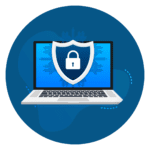
Digital Safety & Privacy
Internet Safety is a priority for the District. CSD uses the Content Keeper content filtering system to prevent students from accessing inappropriate material online while using District computing devices or the District’s network. The restrictions placed on CSD Chromebooks work no matter where the device is being used — at home, at school, or elsewhere.
The Canyons filtering system works by categorizing known Internet content and then allowing us to block inappropriate categories such as pornography, social networking, gambling, weapons, adult content, gaming, etc.
The filtering differs for elementary, middle and high schools and is based on the age-appropriateness and the educational needs of the grade levels.
Canyons District’s network is segmented into several separate sub-networks, which aid in performance and security. Staff using school- or District-provided devices will be placed on a sub-network, which provides them with different access rights and privileges than afforded by the student network for students using school- or district-provided devices. While on CSD property, all users of a personal device — such as a smartphone, laptop or tablet — may access the Canyons Guest network, which has similar restrictions as the student network.
CSD also has the ability to create districtwide “allow” and “block” lists. Allow lists help us to override the filter’s default settings to allow specific sites to be accessed. Block lists are used to override the filter default settings to block sites. We also can block and allow sites per school. In addition, searches for Google Images are directed to a filter called Safesearch. If the content is inappropriate, the user is not granted access.
While the filters used by CSD mostly serve to prevent inadvertent exposure, we can’t guarantee that a determined user won’t ever be able to access inappropriate content.
The accessibility of various online platforms for students at varies by different school levels. At the elementary and middle school levels, access to platforms like Twitter (X), Facebook, Instagram, Tumblr, Spotify, and online shopping is restricted, while YouTube/Vimeo is available only if embedded in instructional materials. In high schools, students have access to (filtered) YouTube/Vimeo and online shopping, but access to social media platforms and streaming services like Spotify remains restricted across all grade levels. This approach helps regulate online activity based on age and appropriateness within the school environment.
Parents can request that additional restrictions be placed on their student’s Chromebook by using their Skyward credentials to log into the Technology Connect Portal. It’s important to note that these additional restrictions may prevent the student from accessing grade-level learning resources and in-classroom adjustments will need to be made. There are two choices for extra filtering:
- Moderate – This filter setting matches the settings in place for elementary students, which grants less access to social media, music and video streaming, and shopping sites. Students at this level may not be able to access some of the learning apps used in middle and high schools. Teachers are prepared to make adjustments to support student learning such as, embedding instructional links in Canvas pages where they won’t be blocked.
- Restrictive – This filter setting is very limited and only allows access to approved websites including, Google Drive, Google Docs, Google Meet, and Canvas. Students at this level will only be able to use learning apps that teachers embed in Canvas, and they will not be able to use Google Search to perform research for an essay or find images for a slide presentation.
In addition to viewing and modifying the Internet filtering level for their student(s), parents may also view flagged search terms, view Chromebook login time, and request sites to be reviewed in the Technology Connect Portal.
Teachers establish classroom procedures to teach students how to use technology properly and define clear expectations for how technology should be used to support learning. This provides procedures for students to follow when interacting with digital tools and devices during classroom instruction.
Teachers are asked to monitor students whenever they are online, either electronically and/or by walking around the classroom. Canyons School District teachers have access to LanSchool/LanSchool Air to electronically monitor the screens of student desktops, laptops, and Chromebook devices owned by CSD. In addition to monitoring, this software also allows teachers to block or allow certain websites or blank out screens to aid in redirecting student attention. Similarly, student iPads can be monitored with Apple Classroom.
When inappropriate content is accessed by a student or staff member (either seemingly by accident or on purpose), the student or students should be removed from the situation and the school principal or administration should be notified. Canyons IT does not constantly monitor user activity. However, when alerted to the possibility of inappropriate use, IT reviews the Internet history in question and reports questionable activity to school and District administrators, who work with students and their parents to determine disciplinary measures. CSD retains weeks of Internet browsing history for all users. Besides working to fix any issue discovered, the IT Department will work with the administration to gather information and take appropriate measures if the Responsible Use Guidelines were violated.
To learn more about the strategies educators use for monitoring technology use at school, visit the Technology Monitoring at School page.
All apps, extensions, and software must be approved before using with students. Websites must also be approved IF they collect student personal identifiable information (i.e. require a student login). The Learn Platform is a database of digital instructional materials that have been reviewed for use in Canyons classrooms. Teachers, students, and families can use the searchable database to determine if a desired resource has already been reviewed or to identify an approved resource for a specific classroom need.
Digital materials are approved if they follow best practices and meet FERPA, CIPA, and COPPA data security standards to ensure student safety. Even if a tool is approved, it might not be suitable for every lesson. Educators are encourage to consult with their school’s Instructional Coach or the Instructional Supports Department Content Specialist if they need support to determine if the material supports best practices for a specific lesson. To learn more about which tools are used and the approval criteria, visit the LEARN page.
- Google Apps Management – We are heavily integrated with Chrome Management for the many Chromebook devices that are in use today. It allows us to manage what apps and services are available for users. For instance, this system is what allows us to set our student Gmail accounts to send and receive emails only to teachers and other students.
- Microsoft System Center Configuration Manager (SCCM) is used to manage all our district and student Windows devices. This includes security updates, system patches, and system upgrades.
- We use the Mosyle mobile device management system to manage iPads. This allows us to manage which apps are loaded onto devices and to purchase apps legally for school use.
SCC School Safety Plan
School Community Councils are recommending bodies to the administration on items being studied by the Canyons Board of Education. Recommendations related to these domains, including school access and safety, may be directed to the Board of Education as appropriate. Each Council, upon review of the School Safety and Digital Citizenship Report, will be asked to share their thoughts and priorities with the District administration via an online form to be filled out and submitted by the principal. These reports will assist the District in spotting trends, setting future priorities and deciding where to direct future resources. Pictured below is a sample of the form to guide you in discussing and providing feedback.
The Utah Legislature, through HB213, has asked School Community Councils to “engage” with school administrators in addressing school safety and digital citizenship. We invite you to familiarize yourself with the safety protocols encapsulated in the School Safety and Digital Citizenship report and join us on this mission to Think Safe toward maintaining schools that are welcoming, secure, and prepared.
- Preparing a School Safety Plan
- Discuss highlights and points of interest from the District School Safety Report (Spanish)
- Review concerns, plans, and progress from last year
- Discuss new or continuing safety concerns specific to your school
- Identify a “#1 safety concern” and other primary concerns (if any)
- Create an “action plan” for addressing safety concerns
- Decide how you may best share safety and digital citizenship resources with parents. Consider the role of the community council to provide options and resources without being prescriptive and compulsory. This may include newsletters and other communications, back to school nights, parent conferences, carnivals, and other school events.
- Ensure that students use their unique login with their unique password.
- Ensure that student-created web pages are made through the supported CSDDOCS.
- During your discussions, if you have questions that cannot be answered in your School Community Council meetings, please contact Susan Edwards, Canyons Public Engagement Coordinator, 801-826-5184 or susan.edwards@canyonsdistrict.org and she will direct you to the right resource to answer your questions for the next School Community Council meeting.
The SCC will share their thoughts and priorities via an online form to be filled out and submitted by the school principal on CSD Dashboard. For your convenience, a copy of the form that you will submit electronically is available below under the heading “Safety Report Template”.
- Execute
- The SCC should occasionally refer back to the school safety plan and action items in order to track progress and determine follow-up steps.
- In last SCC meeting of the year, SCC should review action items from school safety plan (submitted in December). District will also update the SCC on any action or planned action. Principal will submit an update to the plan through CSD Dashboard.
- Safety Report Template
School Principal: _______________________
SCC Chairman: _______________________
Date the discussion(s) took place: _______________________
Who, besides the SCC members, participated (did you invite the SRO, school counselor, psychologist or district personnel?):
Did you feel the information presented in the District School Community Council School Safety Report was helpful?
What, if any, school safety items did your SCC discuss that were not in the report?
Your SCC has been asked to determine the #1 safety concern at your school after reading the report and discuss-ing safety topics at your school. What has your SCC determined to be the #1 safety concern for your school?
What additional items did you identify as primary concerns, if any?
Does your SCC have an action plan to help address the concerns?
SCC Digital Citizenship
The school safety and digital citizenship reports will be submitted to the district and Canyons Board of Education. We will use the reports to see trends, concerns and where future efforts might be focused. The District will evaluate if there are areas in which we can be of assistance or offer support. If so, we will contact your SCC and principal to discuss.
District Filtering & Systems: Does the SCC feel it has received enough information to determine if the filtering systems and supervision practices are appropriate?
- Identify Action plan for filtering/systems, if needed:
Does the SCC feel it has received enough information about the school’s educational efforts to instill in students a desire to be good digital citizens?
- Identify Action plan for filtering/systems, if needed:
Does the SCC believe the school has a viable plan to present important Internet Safety and Digital Citizenship information to parents in the community?
- Identify Action plan for parent education, if needed:
Student Education: Enter the date of your faculty training on Digital Citizenship: ______________
- Enter a short description of your faculty training:
How will every student in your building be provided with digital citizenship instruction during
the school year?
Parent Education: Enter the date of your first community outreach: ____________________________
- Enter a short description of your first community outreach activity/opportunity:
Enter the date of your second community outreach:__________________________________________
- Enter a short description of your second community outreach activity/opportunity:
Additional Topics for Discussion:
- Computers and Devices in the School for Student Use (Field Tech)- Identify the devices and main uses (Office applications, research, presentations, CAD, Graphic Design, Curricular apps, etc.)
- Apple Computers – iMac, Mac Mini, or MacBook Pro stationary or mobile labs-
- Windows Computers – Windows based stationary or mobile labs-
- iPads – Classroom deployment or mobile carts-
- Chromebooks – Classroom deployment or mobile carts –
Management (Admin or Ed Tech Coach)- Are you using LanSchool or other management tools for devices or labs? - Supervision (Admin) – What training has been given or is being planned to help teachers know how to best su-pervise students online and what to do if they become aware of inappropriate use?
- Digital Citizenship Plan (Admin)- How does your school manage rotation through the elementary lab or through the media center? What topics are addressed with each grade level? What other teachers cover Online Safety topics? Have you held any schoolwide training (white-ribbon activities, assemblies)?
- Parent Resources and Information (Admin and Dig Cit Coord)- What information has been shared with parents about online safety at school? What resources for home online safety has been shared?
- Policies (Admin)- What are your policies for students bringing devices from home including computers, tablets, and phones?
- Decision Making (Admin) – How does the school balance access and safety appropriate for the grade levels at your school?
- Guiding Principles (Admin) – What does the administration see as important opportunities for our students related to constructive, proactive technology use? What does the administration see as the greatest threats for your students?


